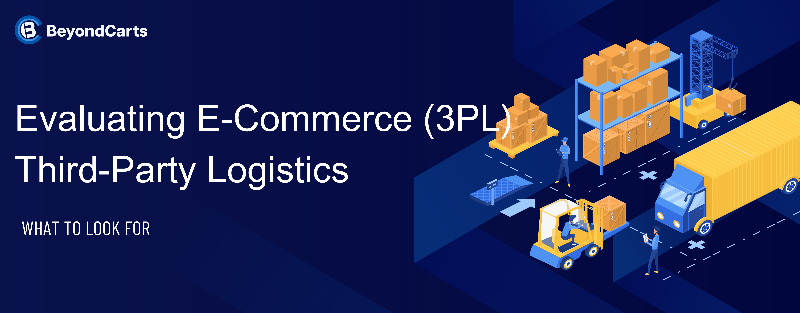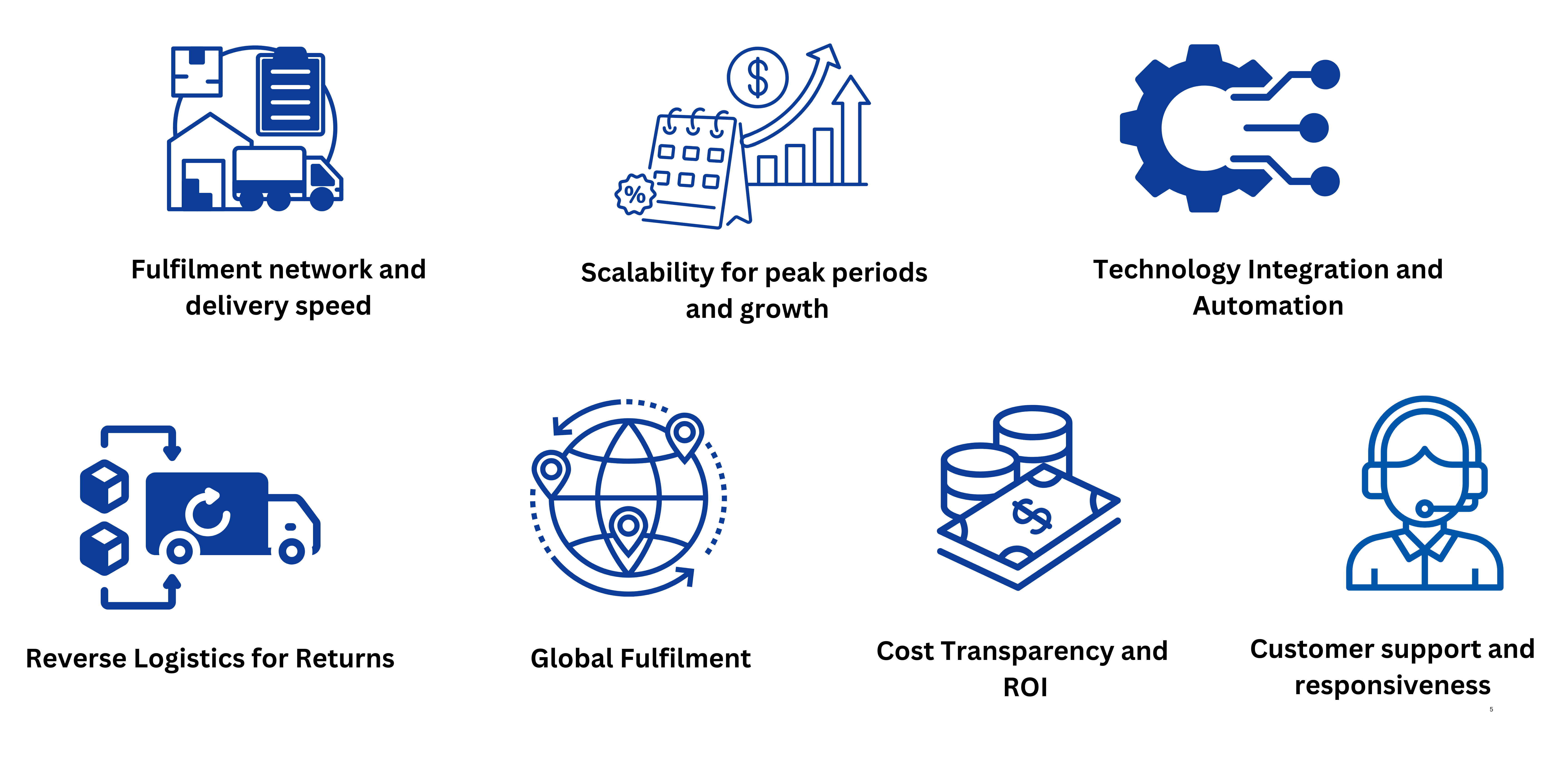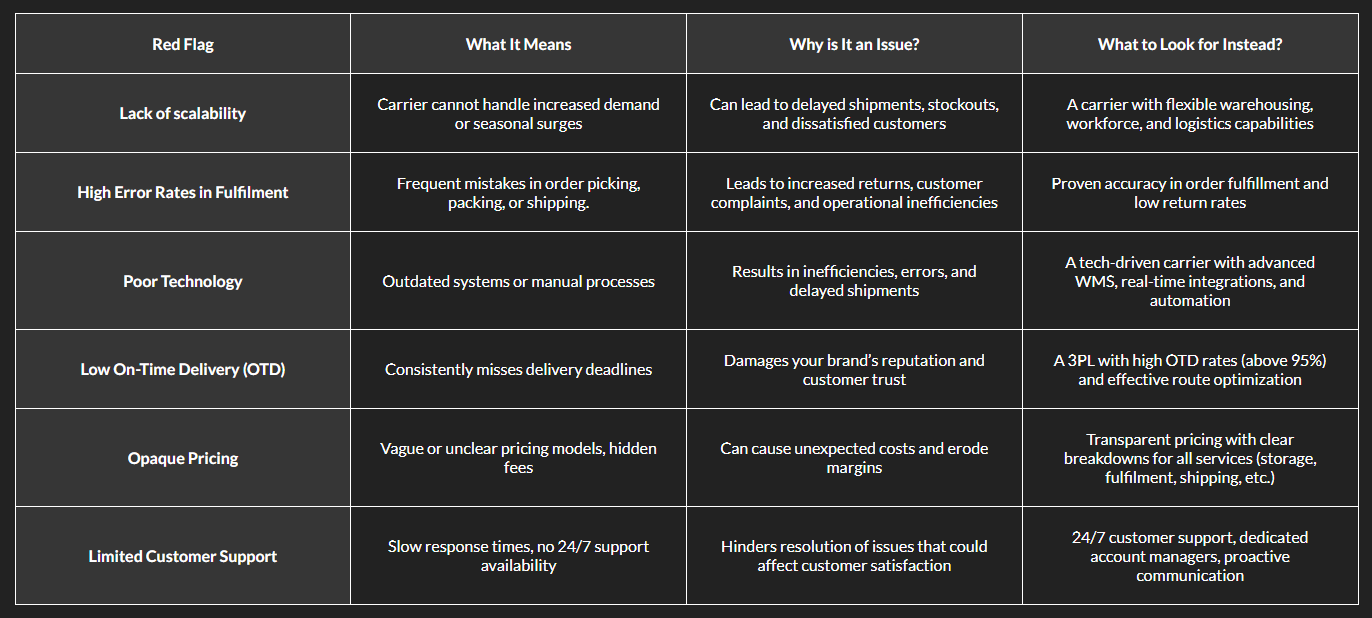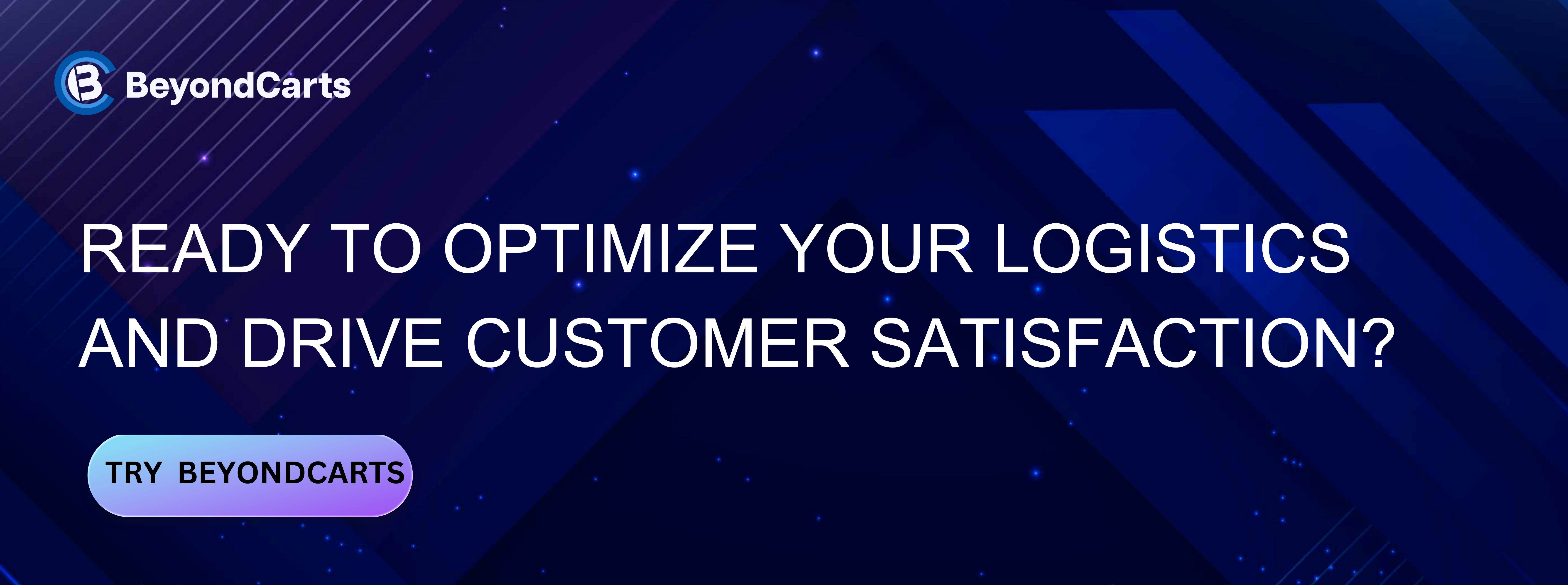
Your eCommerce brand is only as strong as its logistics. With the skyrocketing consumers expectations, the importance of having the right third-party logistics cannot be overstated. A single delayed package or a return gone wrong can tarnish your reputation in the eyes of a customer forever.
So how do you ensure that your 3PL (third party logistics) carriers aligns with your brand’s promise and scales with your business growth? The stakes are high, and selecting the wrong partner can result in missed deadlines, lost customers, and ballooning operational costs.
This blog dives deep into the critical factors to evaluate when choosing a 3PL for your eCommerce business. From mastering last-mile delivery and returns to leveraging advanced technology and seamless integrations, we’ll uncover the specific capabilities and red flags to help you make a confident, informed decision.
Benefits of 3PLs:
- Faster Fulfilment: Proximity to customers and advanced operational capabilities reduce shipping times, meeting consumer demand for same or next day delivery.
- Seamless Integration: Leading third party logistics carriers offer technology integrations with eCommerce platforms (Shopify, Magento, BigCommerce) and marketplaces.
- Cost Optimization: Outsourcing enables shared warehousing and economies of scale for picking, packing, and last-mile delivery.
Key Criteria for Evaluating a Third-Party Logistics (3PL) Carrier
When choosing a third-party logistics partner, it’s crucial to evaluate them on factors that go beyond price and location. Let’s delve deeper into the seven core pillars of an effective eCommerce third party logistics evaluation.

1. Fulfilment Network and Delivery Speed
In eCommerce, speed wins. With 32% of shoppers abandoning their carts due to long shipping times, you need a 3PL with a robust fulfilment network capable of fast, consistent delivery.
Key Aspects to Consider:
- Distributed Fulfilment Centres: 3PLs with multiple warehouses across the country (or globally) ensure that your products are stored closer to end customers, reducing transit times.
- Last-Mile Delivery Expertise: Evaluate how the 3PL handles last-mile delivery, as this is the most time-consuming and costly segment of the shipping process.
- Expedited Shipping Capabilities: Same day and next day shipping options are critical in categories like fashion, electronics, and health products.
Metrics to Check:
- Percentage of your customer base reachable within two days via ground shipping.
- Capacity to support hyper-local delivery for metro areas with high order volumes.
- On-time delivery (OTD) rate for time-sensitive orders.
Collaborate with third party carriers that use real-time route optimization tools and maintain partnerships with multiple carriers for flexible shipping options.
BeyondCarts' delivery experience tools allow businesses to track 3PL delivery performance, offering real-time insights into delays and enabling proactive communication with customers. These tools help you assess whether a 3PL’s fulfilment speed meets your standards
2. Scalability for Peak Periods and Growth
E-Commerce operates in cycles. From Black Friday and Cyber Monday to unplanned viral sales surges, your logistics provider must scale with your demand without compromising quality.
What to Evaluate:
- Peak Season Preparedness: A reliable (3PL) third-party carrier should have detailed contingency plans for managing surges during major holidays.
- Dynamic Storage Options: Scalable warehousing, where you can adjust storage space based on inventory requirements, helps you avoid paying for unused capacity.
- Flexible Workforce Allocation: Ensure the 3PL has a scalable workforce to meet increased order-picking and packing demands during high-volume periods.
Metrics to Check:
- Turnaround time during sales peaks.
- Order accuracy and shipping error rates during high demand periods.
- Ability to fulfil large flash sale orders within a tight timeframe.
Example: If a brand, with a major influencer collaboration increased order by 800% in one weekend. Their 3PL should be able to enable multi-node distribution and same day picking to keep pace.
3. Technology Integration and Automation
Technology separates average third-party carriers from exceptional ones. A tech-driven third-party carrier offers real-time insights, automation, and seamless integration to prevent inefficiencies in order management.
Core Technological Capabilities:
- Direct Platform Integration: Look for third party carriers with APIs that sync inventory, orders, and shipments with Shopify, WooCommerce, Amazon, or Walmart in real time.
- Warehouse Automation: Technologies like robotic picking, automated sorting, and AI-driven inventory allocation minimize errors and speed up order processing.
- Inventory Visibility: A cloud-based system that provides a centralized dashboard for monitoring inventory levels, shipments, and returns in real time.
- Order Routing Algorithms: Automatically route orders to the nearest warehouse or the most cost-effective shipping method.
Key Capabilities to Check:
- Real-time integration with platforms like Shopify, WooCommerce, or Amazon.
- Cloud-based dashboards for shipment visibility.
- AI-powered predictive tools to prevent stockouts or overstocking.
4. Reverse Logistics for Returns
Returns are the Achilles heel of eCommerce, especially in categories like fashion and consumer electronics, where return rates can exceed 30%. An efficient reverse logistics process is crucial for profitability and customer retention.
Components of a Strong Returns Program:
- Seamless Customer Experience: Prepaid return labels and hassle-free return drop-offs improve satisfaction.
- Automated Restocking: Returned items should be processed, inspected, and re-entered into inventory promptly to minimize losses.
- Product Recovery Capabilities: For defective or damaged returns, ensure the third-party carriers has refurbishment or recycling processes.
KPIs to Evaluate:
- Return processing time (average turnaround from receipt to inventory update).
- Percentage of recoverable value from returned goods.
- Customer satisfaction with the returns experience.
Consider 3PLs offering branded returns portals, allowing customers to initiate returns online with your logo and clear status updates.
5. Global Fulfilment and Cross Border Logistics
For eCommerce brands expanding internationally, selecting a third-party carrier with cross-border expertise is critical. The complexities of tariffs, customs, and international carriers can create bottlenecks without the right partner.
Key Features to Look For:
- Global Warehouse Network: Enables storing inventory closer to international customers.
- Customs Compliance: Ensure the carrier handles documentation, duties, and import/export regulations seamlessly.
- Local Delivery Partnerships: Carrier with access to domestic last-mile delivery services in foreign markets reduce costs and improve speed.
Metrics to Check:
- Customs clearance success rates.
- Reliability of international delivery partners.
- Ability to manage Delivered Duty Paid (DDP) shipments effectively.
BeyondCarts offers carrier performance analytics, enabling businesses to assess the reliability and efficiency of 3PL partners in global markets. These insights help eCommerce brands choose the best partners for international shipping
6. Cost Transparency and ROI
Cost is a key factor, but hidden fees can erode margins. A third-party carrier that provides clear, detailed pricing ensures you can accurately forecast logistics expenses.
Breakdown of Common Third-Party Carrier Costs:
- Storage Fees: Charged based on cubic feet, pallet count, or bin usage.
- Order Fulfilment Costs: Picking, packing, and kitting fees based on SKUs or order volume.
- Shipping Rates: Negotiated with carriers, often offering better discounts than in-house operations.
- Value-Added Services: Includes assembly, labelling, custom packaging, or gift wrapping.
Red Flags to Watch For:
- Vague pricing models that lump several costs together.
- “Rush fees” or penalties for same-day order fulfilment.
- Inflexible volume minimums that penalize seasonal businesses.
Example: A small eCommerce brand saved 15% on fulfilment costs by switching to a 3PL with a shared warehousing model, reducing unused storage fees during off-peak months.
BeyondCarts simplifies cost recovery through automated claims for mishandled shipments, enabling businesses to maximize ROI while holding 3PLs accountable for errors.
7. Customer Support and Responsiveness
Even the most advanced third-party logistics carriers will encounter issues, from late shipments to inventory discrepancies. The difference lies in how quickly and effectively they respond.
What to Look For:
- 24/7 Support Availability: For eCommerce brands operating globally, after-hours support is critical.
- Dedicated Account Managers: A single point of contact who understands your business ensures better problem resolution.
- Proactive Communication: Carriers that notify you of issues (e.g., carrier delays, inventory shortages) before they escalate stand out.
Metrics to Check:
- Average response time for support queries.
- Availability of dedicated account managers.
- Proactive communication on shipment delays or issues.
Red Flags to Avoid When Evaluating a Third-Party Carrier
While the criteria above focus on what to look for, here are the most common red flags signalling a 3PL is not the right fit:

Choosing the Right 3PL for Your Business
Selecting a third-party logistic carrier for your eCommerce operation is not a one-size-fits-all decision. It requires a tailored approach based on your current logistics needs and future growth trajectory. Prioritize partners with advanced technology, proven scalability, and customer-centric processes.
The right carrier, beyond handling the logistics, it will become a strategic partner, empowering your eCommerce business to deliver on customer expectations while scaling profitability.
Ready to start your evaluation process?

